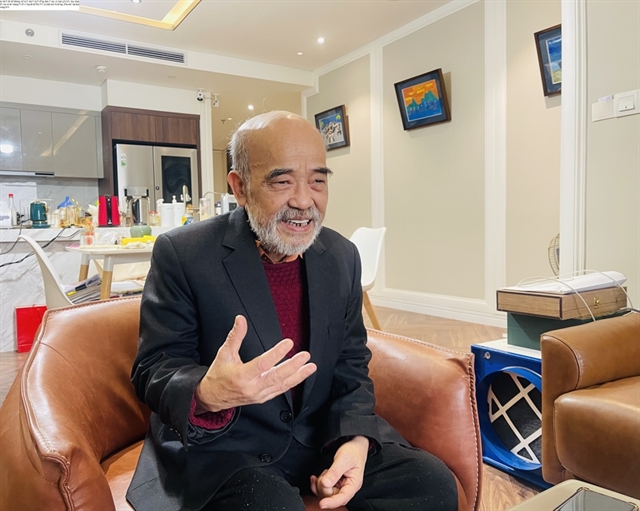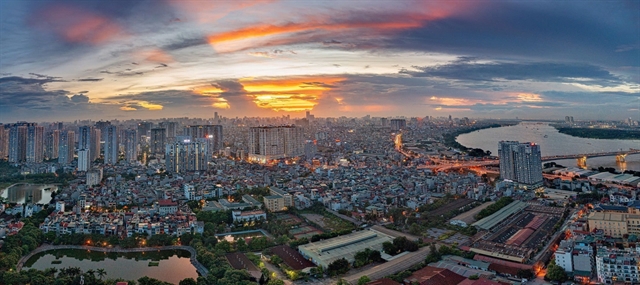 Opinion
Opinion

 |
| Đặng Hùng Võ, former deputy minister of the Ministry of Natural Resources and Environment. — Photo kinhtedothi.vn |
Đặng Hùng Võ, former deputy minister of the Ministry of Natural Resources and Environment, speaks to Kinh tế & Đô thị (Economics & Urban) newspaper about the bold and practical vision of the 2024 Capital Law, which will provide the legal framework for Hà Nội's urban revitalisation.
As an expert who has always shown particular interest in Hà Nội, what is your assessment of the 2024 Capital Law?
Hà Nội is a special city with a rich history spanning over a thousand years of civilisation, heroism and creativity. Its status was established as early as the 1946 Constitution and is reaffirmed in the current 2013 Constitution, which explicitly states "The capital of the Socialist Republic of Việt Nam is Hà Nội."
Throughout its development, Hà Nội has always been a focus for the Party, National Assembly and Government, receiving guidance and a specific legal framework. In November 2012, the National Assembly passed and enacted the 2012 Capital Law. On June 28, 2024, during the seventh session of the 15th National Assembly, the revised Capital Law was passed.
Hà Nội has a law specifically for its development, reflecting the great attention given by the Party, Government and the people of the entire country to the growth of the capital. There are fewer than 10 countries in the world that have a separate law for their capital.
The passing of the 2024 Capital Law is seen as a guiding compass for a significant leap forward for the city. The creation of a law for a locality is extremely challenging, especially when general laws for the entire country already exist.
I highly appreciate the 2024 Capital Law. The law contains specific goals and objectives and integrates seamlessly with the broader legal system, creating a solid mechanism for the development of the capital.
In other words, the 2024 Capital Law realises the vision and aspirations for growth that the people of Hà Nội and the entire nation have longed for – something that the 2012 Capital Law did not achieve.
You've said that the 2024 Capital Law serves as a guiding principle for Hà Nội’s rapid growth. What is the basis for your assessment?
There are four key factors in the 2024 Capital Law that give me the assessment. The first and most important is that the 2024 Capital Law has codified the mechanism for urban development based on the transit-oriented development (TOD).
Specifically, Article 31 sets out provisions for urban development oriented around public transport, including planning for urban railway systems, transportation hubs and the development of inner-city railway lines, along with mechanisms to capture added value from land in the areas surrounding transport hubs. This provides a solid legal foundation for urban railway projects.
In simple terms, no matter what you do, you must build a public transport system. To achieve this, urban transportation planning is essential. From this planning, you will then position the transport hubs and from there, other planning decisions such as residential areas, commercial districts, tourist zones, public utilities and entertainment venues can be developed around the transport network.
To foster economic growth, developing transportation infrastructure is a fundamental necessity. In the past, Hà Nội’s transport development was somewhat haphazard, lacking economic connectivity and often becoming fragmented, thus failing to unlock the full potential of the capital as a mega-city.
Internationally, developed countries demonstrate that TOD is not only a modern urban planning solution but also a core strategy to drive the development of modern cities with high economic density, all while preserving their aesthetic and cultural appeal. This policy optimises land use, reduces traffic congestion, cuts emissions and improves the quality of public spaces.
TOD is also the key to unlocking latent economic potential, enhancing land value and facilitating the development of large economic centres. This policy will ease the revitalisation of key areas in the city by enhancing land use and urban economic activities, while simultaneously upgrading public infrastructure, with a particular focus on building a 'smart capital'. This approach is well-suited to the urgent needs posed by Hà Nội’s rapid urbanisation.
The second important element of the 2024 Capital Law is its emphasis on raising awareness and responsibility for environmental protection. Notably, the law offers solutions to support organisations and individuals in transitioning from fossil fuel-based transport to clean energy vehicles, investing in clean energy transport infrastructure, restricting the use of polluting vehicles and designating low-emission zones (areas where pollutant-emitting vehicles are restricted).
The law also underscores the responsibility of State agencies in environmental protection, with clear regulations on waste management, air and water pollution, and the preservation of urban ecosystems.
 |
| A view of Hà Nội from above. — VNA/VNS Photo |
Another significant feature of the law is that it encourages public participation in environmental protection activities, raising community awareness and citizens’ responsibility towards their environment.
It also promotes the use of new technologies in environmental management and the development of smart cities, which will help minimise negative environmental impacts. This is crucial because environmental protection cannot be the responsibility of the Government alone; citizen involvement is essential for effective outcomes.
The third key factor is that the 2024 Capital Law insists that urban reconstruction must adhere to the principle of preserving cultural values. Specifically, Article 20 stipulates that "Urban renewal and regeneration within the city must comply with planning regulations, urban architecture management standards and protect the capital’s cultural, historical, natural and architectural heritage."
This is a distinctive feature of the 2024 Capital Law. Hà Nội, with its over 1,000 years of history and rich cultural heritage, boasts numerous historical sites from its Thăng Long and Đông Đô eras. Urban reconstruction must balance modernisation with the preservation of Hà Nội's cultural essence. The capital’s cultural soul is a vital element that attracts and retains a high-quality workforce.
The fourth point I want to mention is that the 2024 Capital Law embodies the spirit of Resolution 18/NQ-TW by mobilising resources from the public in urban regeneration, such as land, housing and ideas (proposing planning solutions and creating development spaces for specific areas). This reflects the great vision of President Hồ Chí Minh that all development is driven by the people; the people are the foundation and the engine for growth.
What needs to be done for the provisions of the law to be effectively implemented?
In practice, all conflicts stem from issues of interest. Therefore, for the law to be effectively implemented, I believe that those responsible for enforcement must place the collective interest above personal gains.
If personal interests are pursued, no matter how well the law is designed or how precise the urban planning is, it will be distorted and manipulated by self-interested individuals, ultimately leading to unsatisfactory outcomes.
However, I remain confident, as expressed by Party General Secretary Tô Lâm’s “aspiration for advancement,” and I hope that no "cheese" will be handed to opportunists looking to exploit the policy, obstructing the development of the capital.— VNS




